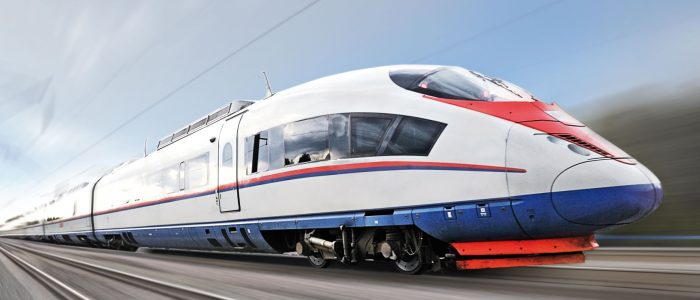COST ENGINEER AND PURCHASER: A GREAT TANDEM
Maarten Erasmus & Peter Smit
(Partner Kloepfel Consulting)
With suppliers in the manufacturing industry you would rather talk about cost than about price. Purchaser and cost engineer can work together and save a lot of costs. Consultants Maarten Erasmus and Peter Smit reveal this with practical examples in the manufacturing industry.
The question is how do you gain insight into the cost of complex products in the manufacturing industry. Even if you have an open calculation, it’s still hard to judge the individual cost elements. As a purchaser you usually do not have the knowledge to assess every cost element for value. In addition, the reliability of an open calculation is often debatable. An open calculation is easy to manipulate, but can also be unreliable because the supplier simply does not know what each element in its production process costs. A cost engineer can help with this. Every supplier has a bias by definition. They live in their own bubble, with the limitations of their machinery, knowledge, experience and supply chain. A supplier will not propose to move production to Eastern Europe if he does not have a production location there. Or use other technology that he does not have in-house. The use of a cost engineer can provide refreshing insights and help in making better choices. The cost engineer can suggest alternatives that would remain out of the picture in the normal interaction between customer and supplier.
Supplier profile
The best weapon available to the purchaser is to request of quotations. The cost engineer on the other hand, depending on the product and the batch size, can sketch a profile of the ideal supplier. This makes it easy to determine whether the current supplier is the correct one and, if this is not the case, requirements can be formulated which the best supplier needs to adhere to. By determining the supplier profile in advance, you can make a more precise selection. Compared to this the request for quotation is like the scattergun approach.
Cost categories
Not only with the selection of new suppliers, but also within an existing supplier relationship, the cost engineer can contribute to improving the product or reduce cost. For this, let’s zoom in on the cost of a product. From the perspective of the cost engineer, there are roughly three categories: production costs, material costs and surcharges. The latter one consist of all cost that are apportioned as a percentage over the products, such as facility costs, overhead and profit. Hereafter we take a deeper dive into these three cost categories.
Production process
By far the most complicated are the production costs, because of the many variables and therefore alternatives that you can compare. Within the borders of a production method a lot of software is available, with which the cost engineer can quickly calculate. For example, to calculate the speed at which a plastic injection molding product rolls out of the mould. It’s getting harder to determine whether a product should be made of plastic all together. The choice of a production method now mainly depends on the expertise of the cost engineer. This might change, because there is always better software available that can weigh different production methods against each other. Because of the enormous complexity, this is still a long way off. But in five to ten years, a purchaser will be able to make such choices without having any technical knowledge. For the coarse work, such software already exists.
A huge load of data
In any case, the role of data is very important. For every step in the production process, the cost of the machine, the throughput and changeover times need to be known. Without this data it is impossible to make a good decision. Especially the use of cost engineering for purchasing purposes requires an enormous amount of data, because a purchaser wants the comparison between all production machines that are available in the market. Setting up your own database is only profitable for a few companies. Therefore, the availability of software incorporating this data is such an important factor. In the example of Hamm’s waltz (see box below) the cost engineer addressed two expensive steps in production. For the use of machining and afterglow a huge milling machine and an oven were required, respectively, which the supplier did not have in-house. The cost engineer then implemented solutions that allow the products to stay in-house with all the (cost) advantages that entails.
The production costs also depend on the amount of man-hours. The cost engineer can determine the deployment of the factor labor per production step. Then it is easy to select the optimum degree of automation and determine and make the trade-off between production in a low-wage country or in one’s own region, for example because that local supplier has a highly automated process has. That can prevent a lot of work.
Best practice example: chassis steamroller
Approach: production process
Savings: 27%
Hamm is a manufacturer of various types of rollers. The connection of the undercarriage to the chassis must be machined for a precise fit. This is difficult because the rollers are so large. It turned out to be possible to pre-machine the parts and only then to weld them, which means that a conventional milling machine can be used. After welding, the entire chassis went into an oven to remove the stresses from the material. Ovens of this size are hard to find, which led to high transport costs. On the advice of the cost engineer, the chassis is now vibrated. This ensures the same result and afterglow is unnecessary. Result: a saving of 27 percent.
“Every supplier lives in their own bubble with several limitations attached”
Cost engineers and purchasers work together on a cost engineering project.
Best practice example: High speed train drive
Approach: cost transparency
Saving: 17%
High-speed train drives are made at locations in Belgium, the Czech Republic and Romania, each with a different working method and different prices. By mapping and comparing the production process of the factories, the ideal process could be determined. There is now one production process as standard for all locations. Some pre-processing operations have been outsourced and a lot of attention is paid to cost drivers in assembly. Result: a saving of 17 percent.
“Compared to an accurate supplier profile the request for quotation is like the scattergun approach.”
Material costs
The costs of materials are generally quite obvious and easier to discuss for the purchaser. The supplier may not disclose the proportion of material. In that case, the cost engineer can determine this share and make the discussion about this transparent. Material costs also include purchased components, such as fasteners, electronics and drives. With complex assemblies, it is difficult for the purchaser to find out the current price of all components, especially if the supplier does not disclose any details. The price structure of components is often not very transparent, so don’t be surprised if the supplier makes about 30 percent margin. Unlike material costs, for which commodity indices are often available, it is difficult to determine the market price of components. Here too, the importance of an up-to-date and extensive database is evident.
Organizational costs
The cost price also includes costs that are not directly related to the production process. These are mainly the organizational costs that are usually apportioned as a percentage. The cost engineer will fall back on averages to calculate these costs. It is therefore wise to discuss the percentages assigned with the supplier and to check them against the key figures that they uses themself. Costs for packaging, checks, scrap and transport can be made concrete and discussed. Surcharges for things like risk, profit and overheads are more arbitrary and mainly input for the negotiation.
Best practice example: Metal reinforcement of plastic cover
Approach: Redesign
Saving: 39%
Putzmeister makes machines for concrete processing. The existing reinforcement of one of the products consisted of several parts welded together. The part is molded into plastic and is not visible in the finished product. The cost engineer has designed an alternative made of bent sheet material, which can be manufactured simply, faster and 39 percent cheaper.
Should-cost analysis
The cost engineer does not have to limit himself to the existing design, but can also provide alternatives. Of course they require more time and consultation and you have to consider whether the expected improvement outweighs the effort. Looking at the impact means making the costs transparent, the should-cost analysis, the simplest and most often the first step. You can compare this calculation with those of the supplier and have a conversation about the differences. This often results in the first cost reduction without changes in design or process.
Best method
However, improvements in the production process don’t have to be complicated. The batch size for example, adjusting is a simple change that can yield interesting savings. In the example of the drives for high-speed trains on the previous page, were previously the same products was manufactured on three different locations, but in three different ways. The individual processes have been mapped and of each production step the best method is chosen. This way one best process could be set as standard.
Changing suppliers
It may also turn out that you do not have the right supplier, for example because they do not have the right means of production. It may then be more favorable to change suppliers. Wage costs can make you decide to look for an alternative in another country, of course only if the business case is interesting enough. Finally, the cost engineer can propose to change the design. The impact of this becomes greater the more radical the change is. A good business case is then indispensable, but fortunately the cost engineer can provide the input for this. In the example of Putzmeister’s welded frame above, a new design has been chosen that could be made from sheet metal. The savings here were evident and the costs were recovered in a short time.
Lucrative en effective
The collaboration between purchaser and cost engineer is lucrative. At the supplier they can go deeply into the technical and financial details of a calculation and constructively contribute ideas about improvements. This is more effective than waiting and selecting offers. There are companies that want to go so far that the cost engineer determines the price, so that a quotation is no longer necessary. With the right data and good agreements about surcharges, this is a realistic picture of the future, with which the customer and supplier can save a lot of time. The triangle supplier – purchaser – cost engineer has many buttons to switch. Every button is an opportunity to reduce costs and/or improve quality. And that ultimately pays off.



Comments are closed.